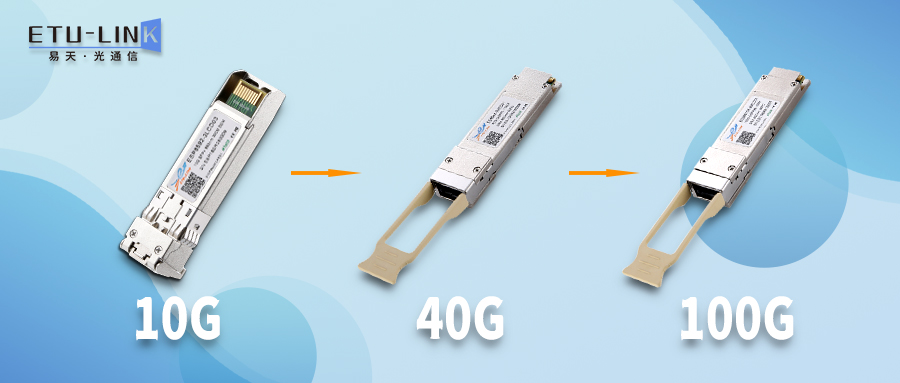
The four requirements for optical modules in data centers
At present, data center traffic is increasing exponentially and network bandwidth is also being upgraded, which brings great development opportunities for high-speed optical modules. ETU-link will talk about the four requirements for optical modules in the next generation data center.
1. High speed, improve bandwidth capability
The switching capacity of switching chips almost doubles every two years. Broadcom continued to launch Tomahawk series switching chips from 2015 to 2020, with the switching capacity increasing from 3.2T to 25.6T. The new product is expected to have an exchange capacity of 51.2T by 2022. The port rates of servers and switches are 40 Gbit/s, 100 Gbit/s, 200 Gbit/s, and 400 Gbit/s. At the same time, the transmission rate of the optical module increases steadily and is being upgraded in the direction of 100G, 400G, and 800G.

2. Low power consumption, reduce heating
The power consumption of data centers is very large every year. It is estimated that in 2030, the power consumption of data centers will account for 3%-13% of the global total power consumption. Therefore, low power consumption has also become one of the requirements of data center optical modules.
3. High density, space saving
As the transmission rate of optical modules increases, the volume and power consumption of four 10Gbit/s optical modules are higher than that of one 40Gbit/s optical module.
4. Low cost
With the increasing capacity of switches, major manufacturers have launched 400G switches one after another. Usually, the number of ports on a switch is very dense. If optical modules are installed, the number and cost of optical modules are huge. Therefore, lower-cost optical modules can be used in data centers on a larger scale.
In view of the advantages of material cost and high integration of silicon optical solutions, large-scale commerce will help reduce the cost of high-speed optical modules. In terms of capacity, silicon optical integration is based on CMOS production process, and it only takes 3-5 months to achieve expansion; In terms of output, the silicon optical chip adopts an 8-inch wafer, and a single wafer can obtain more chips; In terms of yield, silicon wafer materials are inexhaustible, and the comprehensive yield can reach more than 80% - 90%. According to the prediction of a research organization, the global Ethernet optical module market will be close to US $7 billion in 2026, of which the sales of 400G/800G high-speed optical modules will account for 60%.
Categories
New Blog
Tags
© Copyright: 2025 ETU-Link Technology CO ., LTD All Rights Reserved.

IPv6 network supported
Friendly Links:
易天官网